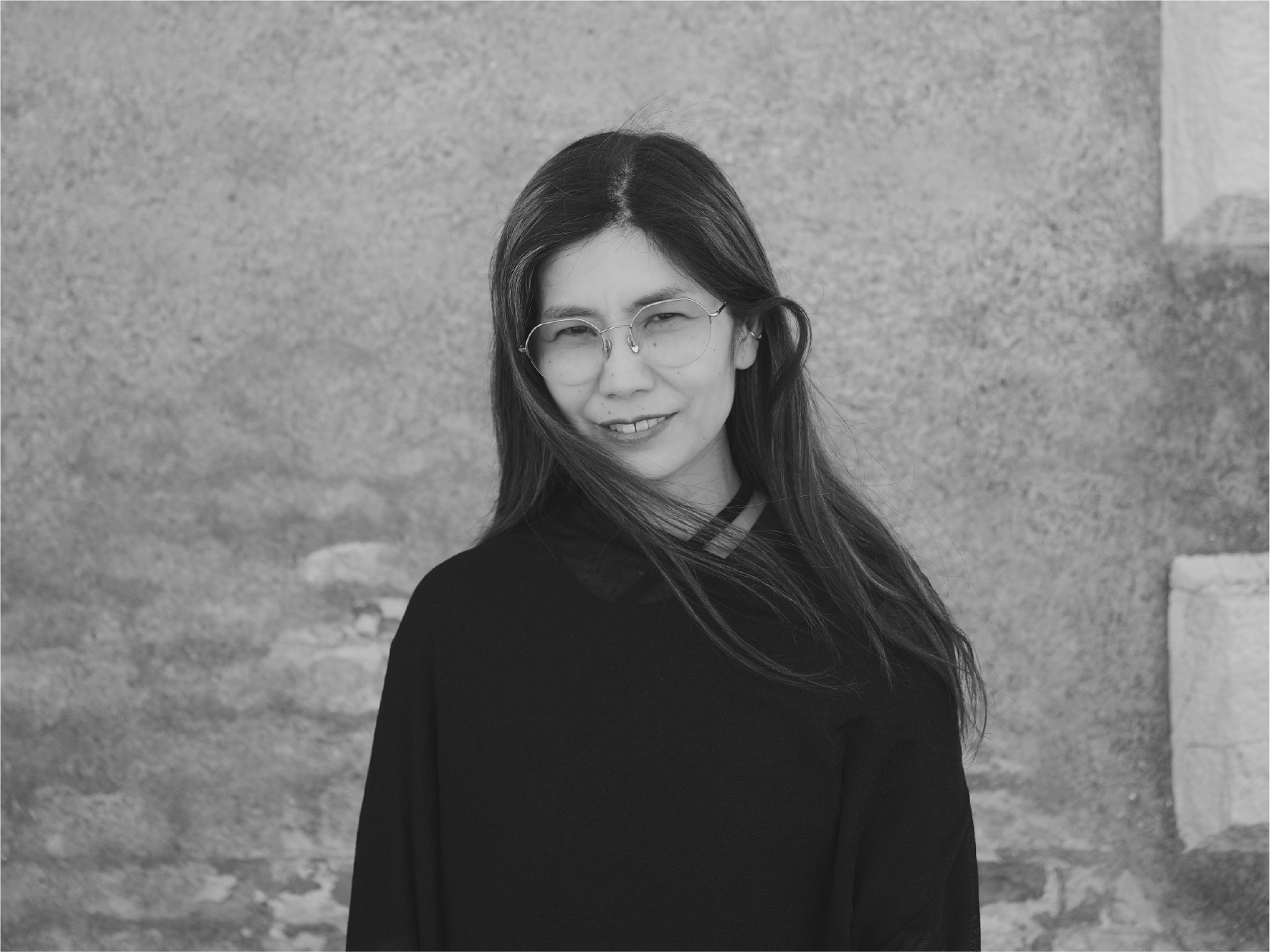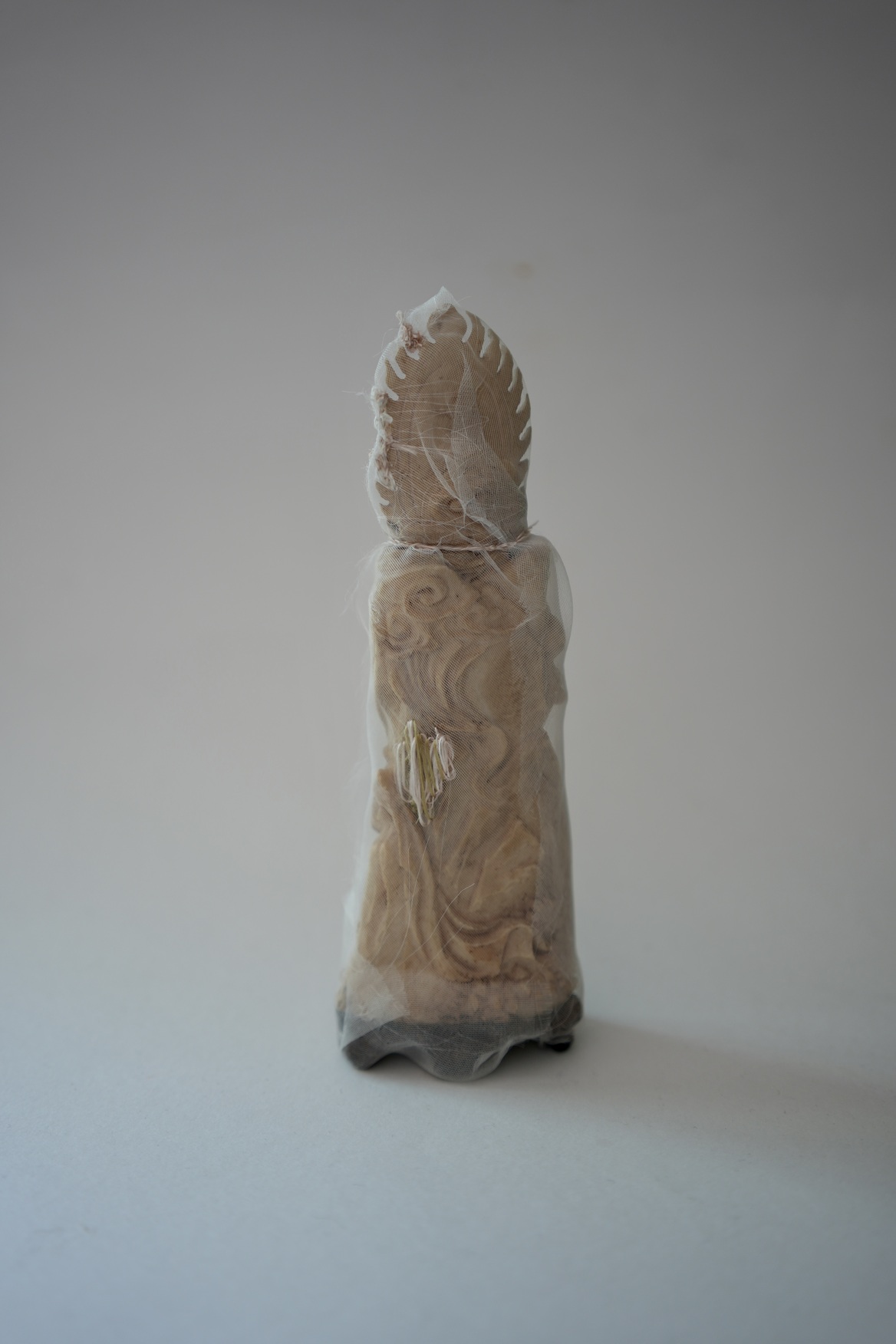다케무라 케이

다케무라 케이
▷ 작가님의 작업은 아주 사적인 우연에서 시작되었다고 들었습니다.
“2000년 베를린에 막 정착했을 때의 사고가 계기가 되었습니다. 제가 설치한 세탁기가 작동 중에 크게 움직이면서, 그 위에 말리려고 올려둔 접시와 컵들이 모두 바닥에 떨어져 산산이 깨지고 말았죠. 제가 아끼던 1960~70년대 독일 디자인 식기들이었어요. 깨진 조각들을 아직 창가에 걸지 않은 얇은 커튼 천에 급히 감싸 안았던 그 순간이, ‘Renovated XXX’ 연작을 시작하게 된 직접적인 계기가 되었습니다.”
▷ 깨진 사물을 ‘복원’하는 작업 방식이 독특합니다. 어떤 의미를 담고 있나요?
“저는 사물 본연의 기능이나 물리적인 형태보다 그것이 지닌 기억과 흔적을 더욱 섬세하게 보존하고자 합니다. 깨진 조각들을 비단실로 정성스럽게 꿰매고 감싸는 과정을 통해, 망각의 경계를 넘어 우리가 잃어버린 것을 다시 감각하게 하는 것이죠. 한번은 2차 세계대전 중에 손상되었던 클로드 모네의 ‘수련’을 복원하는 작업을 진행한 적이 있습니다. 그 훼손된 그림이 시간을 뛰어넘어 저와 원래의 소장자를 조용히 연결해주었고, 그 순간 인간의 삶이 사물의 시간보다 훨씬 짧다는 사실을 깊이 실감하게 되었습니다.”

Renovated Black Korean Vase, Korean black vase, silk cloth, Japanese silk thread, glue, 20x19x15cm, 2025
▷ 작업에 주로 ‘비단실’을 사용하시는 이유가 궁금합니다.
“‘일상’이라는 개념이 결코 보편적이지 않다는 사실을 베를린에서 깨달았어요. 독일인들에게 비단실은 익숙한 재료가 아니었죠. 한국이나 일본에서 비단은 귀하고 특별한 소재로 인식됩니다. 저는 이 비단실을 작업의 재료로 삼아, 지금으로부터 다음 천 년을 향한 메시지를 담고자 합니다. 누에고치에서 유래한 이 단백질 섬유는 1000년 이상 보존이 가능하고, 그 구조가 인간의 피부와 매우 유사하다는 점도 주목할 만합니다.”
▷ 이번 특별전에서는 어떤 작품을 선보이며, 관객들이 무엇을 느끼길 바라나요?
“이번 전시를 위해 인터넷 경매로 구한 조선시대 찻잔 등을 ‘복원’한 작업을 선보입니다. 제 작품은 매우 작은 목소리를 가지고 있기 때문에, 그 소리를 듣기 위해서는 관람객의 집중이 필요합니다. 아트페어는 수많은 작품들이 존재하는 거대한 숲과 같아서 때로는 매우 소란스럽죠. 그럼에도 저는 모든 사람이 각자 가진 관심과 호기심의 씨앗이, 예상치 못한 방식으로 제 작품과 연결될 수 있는 가능성을 믿습니다.”

Renovated Ivory Buddha, IvoryThailand, Japanese Silk ThreadCloth, 17.5×3.7×3.3cm, 2025

